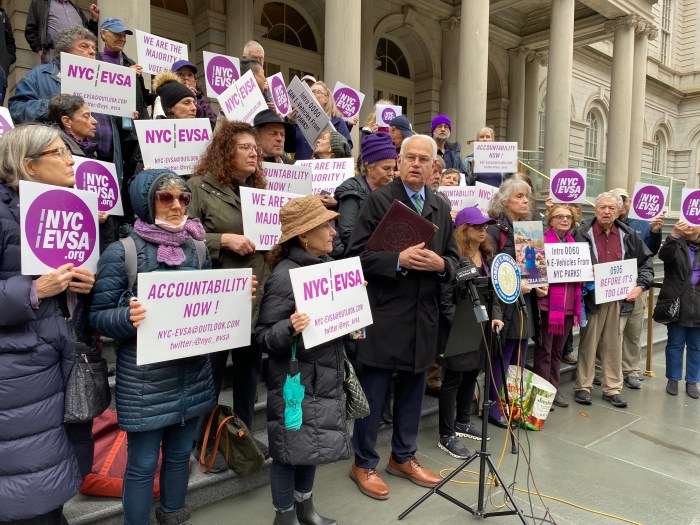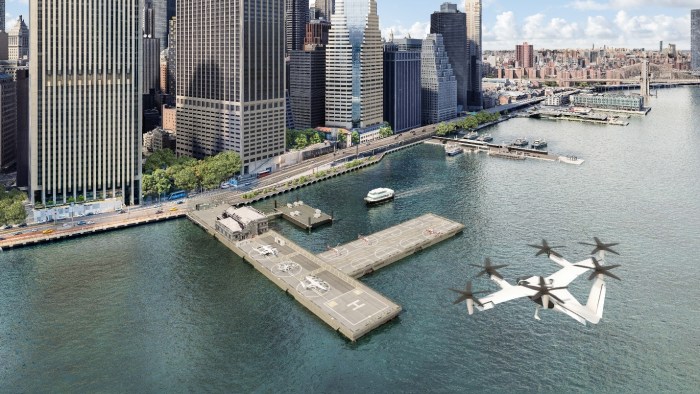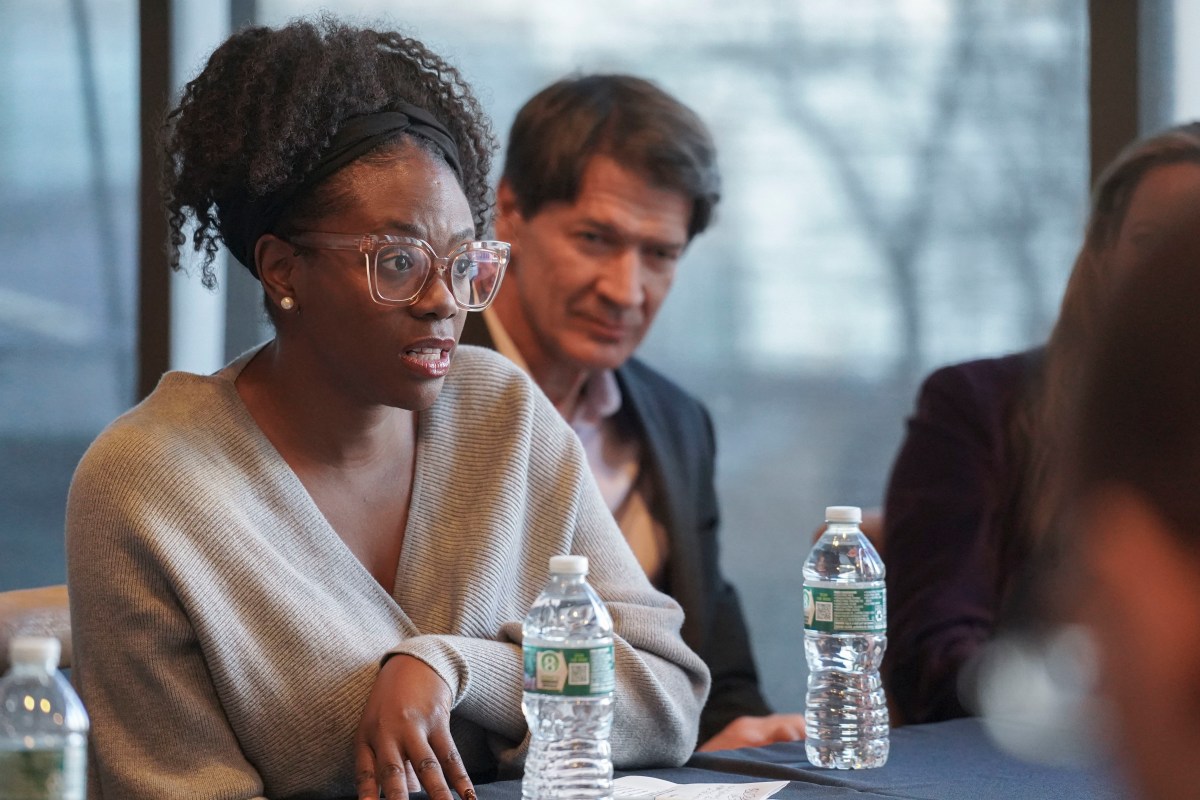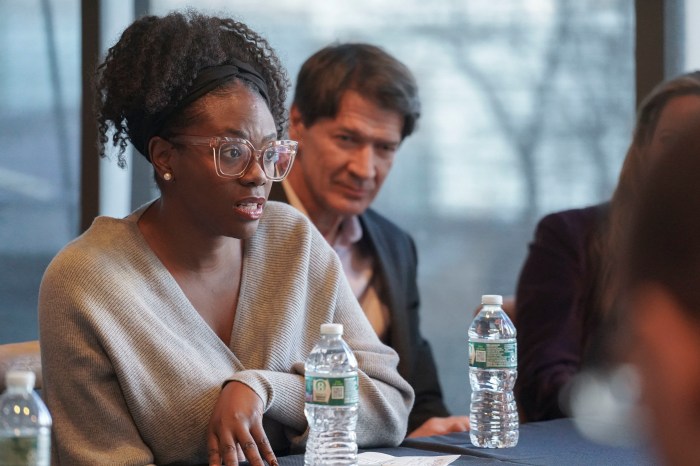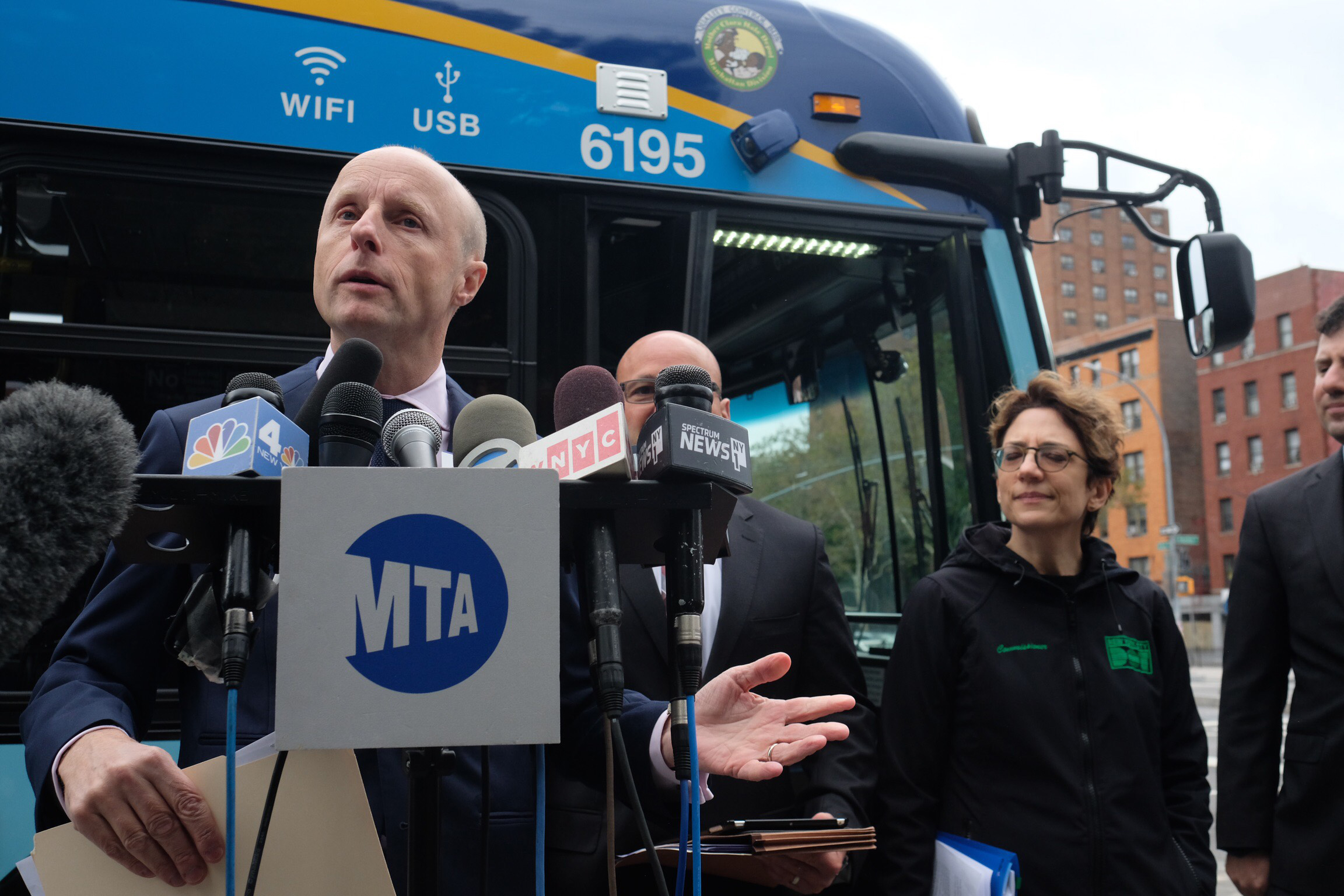
BY VINCENT BARONE | Ridership has jumped on the M14 SBS since the roll out its 14th Street busway pilot, according to early MTA data.
MTA Transit President Andy Byford attributed the initial uptick to “incredibly encouraging” improvements in speed and reliability along the major Manhattan route since the busway took effect Thursday, Oct. 3.
“This is what it’s all about folks. It’s about getting people back on public transit,” said Byford. “But to do that you have to make it attractive and you have to show that it’s the best way to go along these key corridors.”
The transit authority touted a 17 percent increase in average weekday M14 ridership — from 26,350 riders to 31,031 — when comparing the first eight weekdays of busway operations to figures September of 2018. The slight, gradual increase can also be attributed to the L train “slowdown” and launch of SBS service, which took effect earlier this year, Byford said.
At the same time, M14 speeds have risen nearly 35 percent along the busway, with average run times down from 16.3 minutes to 10.6 minutes. That data comes from comparing the first eight weekdays of busway operations to the average run times from all of October of last year, tracked between 6 a.m. and 7 p.m.
Buses have been “sailing along,” to use Byford’s words, so efficiently that the MTA is looking to rework M14 schedules to more accurately reflect new speeds.
The city is also considering tweaks on the street. City Transportation Commissioner Polly Trottenberg, who implemented the busway alongside the MTA, reminded reporters that the 18-month pilot was just getting started and that adjustments could be coming to improve traffic flow.
“We’re seeing pretty minimal impact on the side streets — a little more impact on the avenues,” Trottenberg said. “But so far on the bus performance side, it’s exceeded our expectations. The traffic issues on the side streets — that too has exceeded our expectations.”
Local neighborhood blocks around 14th Street had held up the project for months through a lawsuit that was ultimately dismissed, warning that a ban on private through traffic would lead to chaotic backups on nearby arteries, like 12th, 13th, 15th and 16th streets.
But the project has led to “no discernible performance changes to neighboring roads,” according to an independent analysis from the transportation analytics firm INRIX.
Arthur Schwartz, a local resident and attorney leading the fight against the busway, plans to move ahead with his appeal of the lawsuit’s dismissal, arguing that traffic has worsened in a way that could be negatively impacting other buses on the avenues.
“I get reports every day of people complaining about streets being backlogged from one avenue to another,” said Schwartz. “It seems to be worse in Chelsea than in the Village. The only reason they’re actually moving cars through is because they have traffic agents.”
Advocates who have fought hard for the busway have been celebrating what they see as an early success and are eagerly waiting to see where the DOT and MTA look to launch the next project.
“What we’re looking at model for streets–and not just Manhattan’s crosstown streets but for other busy bus routes in other boroughs,” said Joe Cutrufo, spokesman at Transportation Alternatives. “It’s shouldn’t take three years of advocacy to make the next busway happen. It’s just paint; it should take three weeks.”
The wheels appear to be in motion at the DOT and MTA. Byford called the project a “forerunner for what the city has to do” along major crosstown routes.
“We have a number [of busways] in mind,” Byford added. “I want us to do the homework first before we announce that … it’s all about taking tangible action to get the buses moving through congested streets.”




